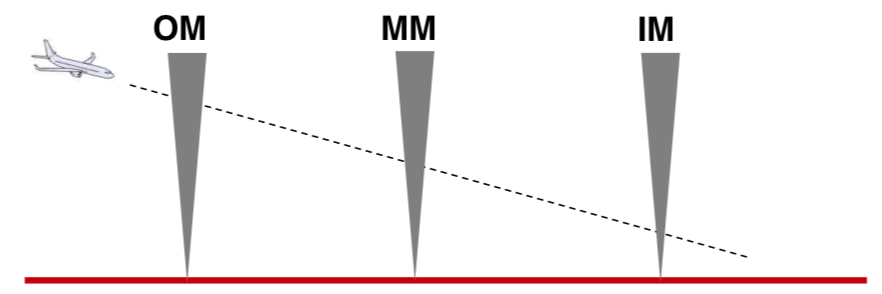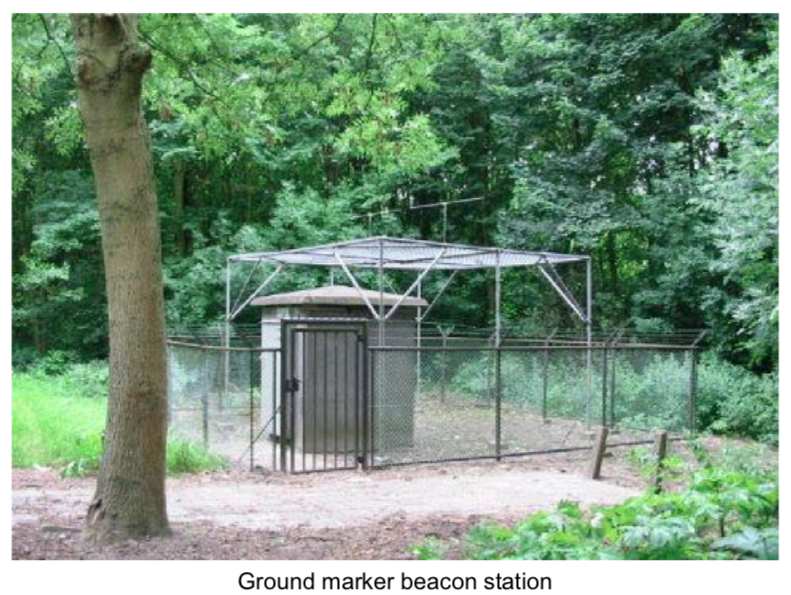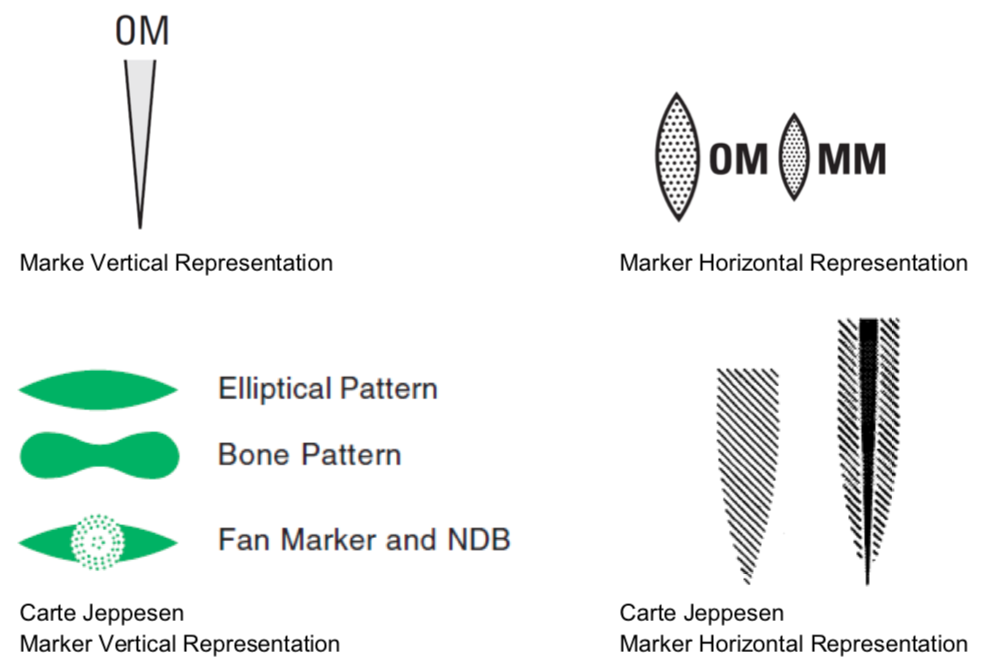¶ Introduction
A marker beacon is a VFR radio transmitter which radiates vertically a distinctive pattern for providing position information to aircraft.
From the 1930s until the 1950s, markers were used extensively along airways to provide to aircraft an indication of its position.
They are now gradually being deactivated as RNAV navigation and GPS instrument have made marker beacons obsolete.
Nowadays, marker beacons are still used in some airfields in conjunction with an instrument landing system (ILS), to give pilots a means to verify its position.
¶ Ground equipment
¶ Marker type
There are three types of marker beacons:
- Outer Marker (OM)
- Middle Marker (MM)
- Inner Marker (IM)
In the final approach path, the markers are overflown in the same order.

Note: when marker beacons are available on the airfield, the presence of all marker beacons is not guaranteed. Some airfields can have only one or two marker beacons.
¶ Technical review
Each marker beacon station on ground transmit a amplitude modulated (AM) signal on VHF 75MHz frequency using low power (about 1 to 5W only).
All marker beacons use a sinusoid signal in a certain frequency in order to make distinction between them:
- 400Hz sinusoid for Outer Marker
- 1300Hz sinusoid for Middle Marker
- 3000Hz sinusoid for Inner Marker
The Outer Marker is situated on the same course/track as the localizer and the runway centreline before the runway threshold. It is typically located about 1 NM inside the point where the glideslope intercepts the intermediate altitude. The Middle Marker works on the same principle as an outer marker. It is normally positioned 0.5 to 0.8NM before the runway threshold. The Inner Marker works on the same principle as an outer and middle marker. It is normally positioned 75m to 450m from the threshold of the runway on some ILS approach systems.

Marker antenna is highly directional, and is pointed straight up. The valid signal area is a 730m x 1,280m ellipse. When the aircraft passes over the outer marker antenna, its marker beacon receiver detects the signal.
¶ Charts Representation
Marker representation on chart can be one of these examples showed below:

- None
- None
- VID 150259 - Creation
- VID 450012 - Update
- VID 497664 & 496402 - Wiki.js integration